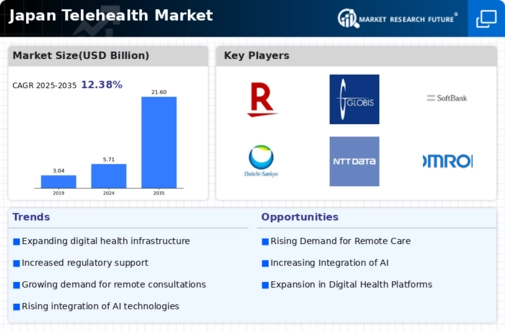The Japan Telehealth Market is characterized by its rapid growth and evolving landscape, driven by technological advancements and changing consumer preferences. Telehealth services have gained traction in Japan, particularly in response to the ongoing push for digital transformation in healthcare. This competitive market features a variety of players ranging from established technology firms to healthcare-specific startups. Companies are increasingly focused on developing integrated platforms that offer remote consultations, telemonitoring, and personalized healthcare solutions.
The competitive insights reveal that players are leveraging partnerships and collaborations to enhance their service offerings, which is essential in a market that demands high-quality patient care coupled with innovation.Fujitsu is a significant player in the Japan Telehealth Market, showcasing its strengths through advanced technological capabilities and an extensive healthcare solutions portfolio. The company has successfully integrated its IT services with healthcare systems, allowing for improved patient management and data analytics.
Fujitsu’s robust infrastructure provides healthcare providers with the necessary tools to implement telehealth solutions that are efficient and user-friendly. Its position in the market is further strengthened by its focus on security and compliance, addressing critical concerns related to patient data protection. The company's established reputation and experience in IT consulting enhance its ability to deliver innovative telehealth solutions tailored specifically for healthcare institutions in Japan.M3 has carved a niche for itself in the Japan Telehealth Market by leveraging its expertise in medical-related digital platforms.
The company's offerings include a comprehensive range of telemedicine services, online appointment scheduling, and telehealth consultations, making it a prominent player in the sector. M3's strengths lie in its deep understanding of healthcare needs and strong relationships with medical professionals, further establishing its market presence. The firm continuously engages in strategic partnerships and acquisitions that bolster its service capabilities while expanding its reach within Japan. M3's investment in cutting-edge technology helps streamline healthcare processes, enhancing the overall patient experience.
Through these initiatives, the company aims to facilitate effective communication between healthcare providers and patients, contributing significantly to the evolution of telehealth in Japan.


















